Tianjiao Yu
Uncertainty in Action: Confidence Elicitation in Embodied Agents
Mar 13, 2025Abstract:Expressing confidence is challenging for embodied agents navigating dynamic multimodal environments, where uncertainty arises from both perception and decision-making processes. We present the first work investigating embodied confidence elicitation in open-ended multimodal environments. We introduce Elicitation Policies, which structure confidence assessment across inductive, deductive, and abductive reasoning, along with Execution Policies, which enhance confidence calibration through scenario reinterpretation, action sampling, and hypothetical reasoning. Evaluating agents in calibration and failure prediction tasks within the Minecraft environment, we show that structured reasoning approaches, such as Chain-of-Thoughts, improve confidence calibration. However, our findings also reveal persistent challenges in distinguishing uncertainty, particularly under abductive settings, underscoring the need for more sophisticated embodied confidence elicitation methods.
CALICO: Part-Focused Semantic Co-Segmentation with Large Vision-Language Models
Dec 26, 2024Abstract:Recent advances in Large Vision-Language Models (LVLMs) have sparked significant progress in general-purpose vision tasks through visual instruction tuning. While some works have demonstrated the capability of LVLMs to generate segmentation masks that align phrases with natural language descriptions in a single image, they struggle with segmentation-grounded comparisons across multiple images, particularly at finer granularities such as object parts. In this paper, we introduce the new task of part-focused semantic co-segmentation, which seeks to identify and segment common and unique objects and parts across images. To address this task, we present CALICO, the first LVLM that can segment and reason over multiple masks across images, enabling object comparison based on their constituent parts. CALICO features two proposed components, a novel Correspondence Extraction Module, which captures semantic-rich information to identify part-level correspondences between objects, and a Correspondence Adaptation Module, which embeds this information into the LVLM to facilitate multi-image understanding in a parameter-efficient manner. To support training and evaluation, we curate MixedParts, a comprehensive multi-image segmentation dataset containing $\sim$2.4M samples across $\sim$44K images with diverse object and part categories. Experimental results show CALICO, finetuned on only 0.3% of its architecture, achieves robust performance in part-focused semantic co-segmentation.
PRIMA: Multi-Image Vision-Language Models for Reasoning Segmentation
Dec 19, 2024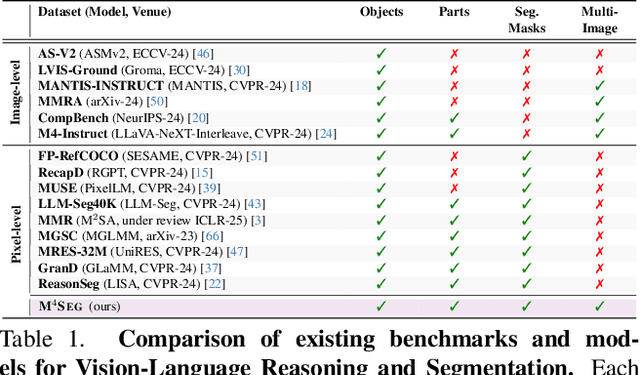
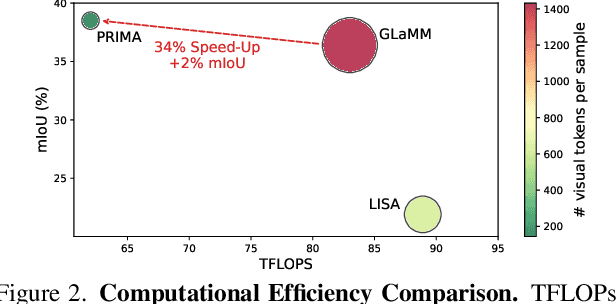
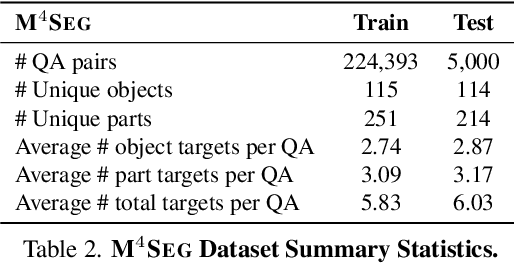
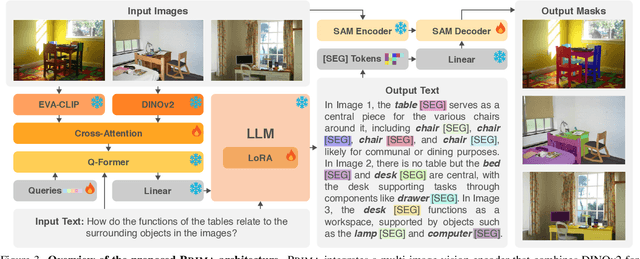
Abstract:Despite significant advancements in Large Vision-Language Models (LVLMs), existing pixel-grounding models operate on single-image settings, limiting their ability to perform detailed, fine-grained comparisons across multiple images. Conversely, current multi-image understanding models lack pixel-level grounding. Our work addresses this gap by introducing the task of multi-image pixel-grounded reasoning segmentation, and PRIMA, a novel LVLM that integrates pixel-level grounding with robust multi-image reasoning capabilities to produce contextually rich, pixel-grounded explanations. Central to PRIMA is an efficient vision module that queries fine-grained visual representations across multiple images, reducing TFLOPs by $25.3\%$. To support training and evaluation, we curate $M^4Seg$, a new reasoning segmentation benchmark consisting of $\sim$224K question-answer pairs that require fine-grained visual understanding across multiple images. Experimental results demonstrate PRIMA outperforms state-of-the-art baselines.
Sedition Hunters: A Quantitative Study of the Crowdsourced Investigation into the 2021 U.S. Capitol Attack
Feb 21, 2023



Abstract:Social media platforms have enabled extremists to organize violent events, such as the 2021 U.S. Capitol Attack. Simultaneously, these platforms enable professional investigators and amateur sleuths to collaboratively collect and identify imagery of suspects with the goal of holding them accountable for their actions. Through a case study of Sedition Hunters, a Twitter community whose goal is to identify individuals who participated in the 2021 U.S. Capitol Attack, we explore what are the main topics or targets of the community, who participates in the community, and how. Using topic modeling, we find that information sharing is the main focus of the community. We also note an increase in awareness of privacy concerns. Furthermore, using social network analysis, we show how some participants played important roles in the community. Finally, we discuss implications for the content and structure of online crowdsourced investigations.
Deep object detection for waterbird monitoring using aerial imagery
Oct 10, 2022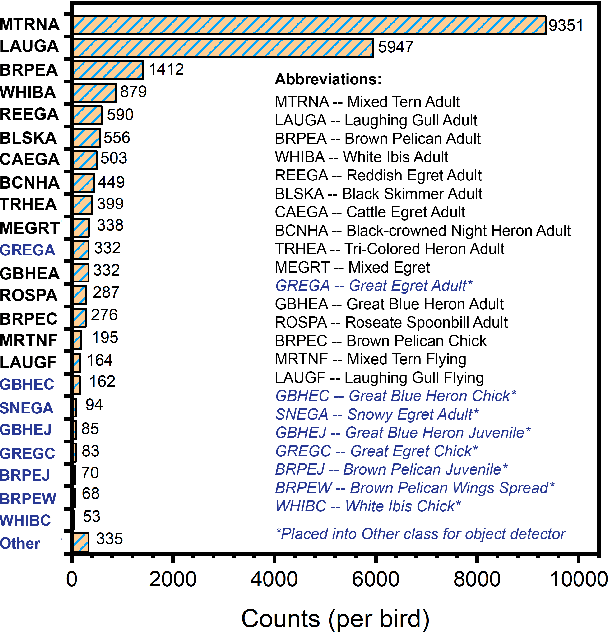
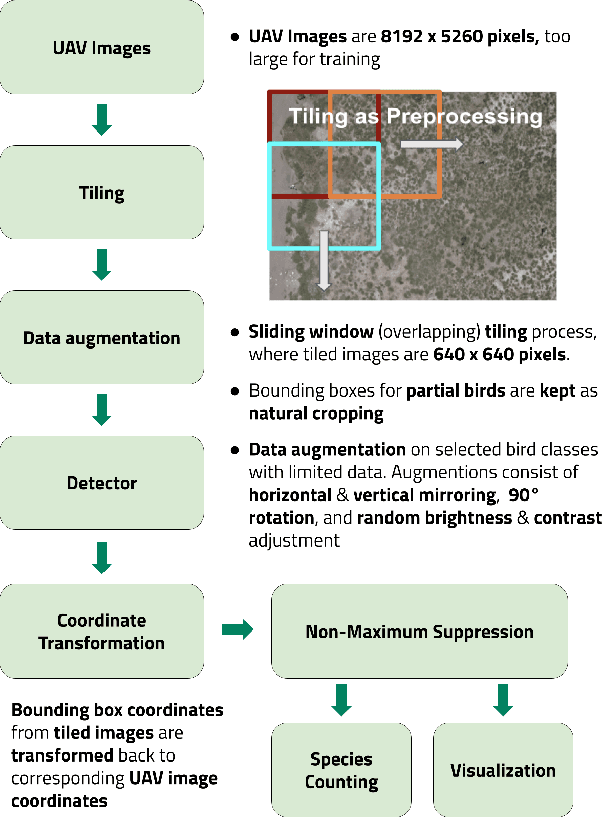
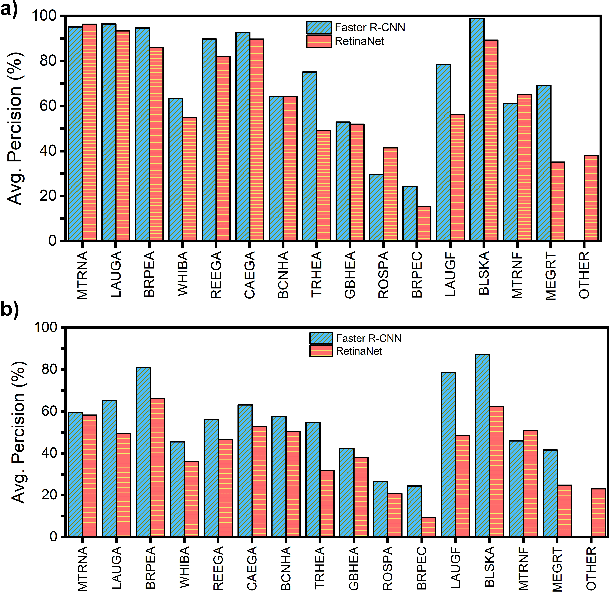
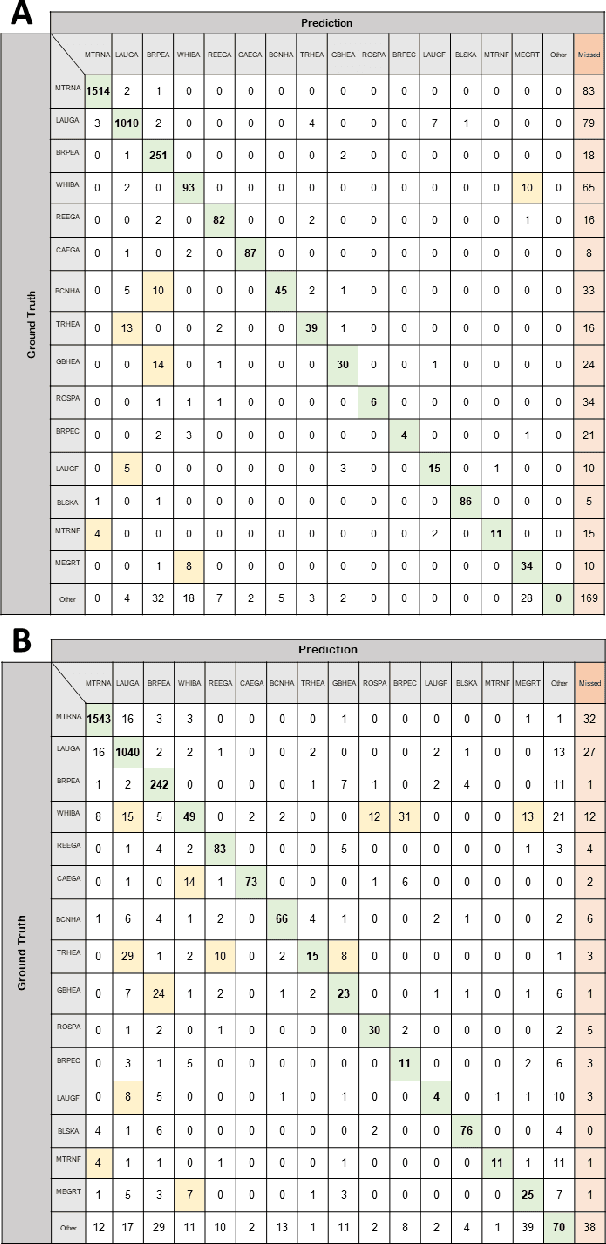
Abstract:Monitoring of colonial waterbird nesting islands is essential to tracking waterbird population trends, which are used for evaluating ecosystem health and informing conservation management decisions. Recently, unmanned aerial vehicles, or drones, have emerged as a viable technology to precisely monitor waterbird colonies. However, manually counting waterbirds from hundreds, or potentially thousands, of aerial images is both difficult and time-consuming. In this work, we present a deep learning pipeline that can be used to precisely detect, count, and monitor waterbirds using aerial imagery collected by a commercial drone. By utilizing convolutional neural network-based object detectors, we show that we can detect 16 classes of waterbird species that are commonly found in colonial nesting islands along the Texas coast. Our experiments using Faster R-CNN and RetinaNet object detectors give mean interpolated average precision scores of 67.9% and 63.1% respectively.
 Add to Chrome
Add to Chrome Add to Firefox
Add to Firefox Add to Edge
Add to Edge